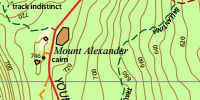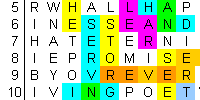
Cartography Community Mapping, CCM, offers pro bono mapping services to non-profit organizations such as Landcare groups. Maps can be provided in any of the standard graphical file formats and georeferenced for Google Earth Pro, mobile devices and map capable GPS application. In addition CCM produces topographical maps for walkers. The Walking Tracks maps include Mount Alexander Regional Park, Castlemaine Diggings National Heritage Park (9 maps), Paddys Ranges, Post Office Hill, Campbells Creek, Muckleford Forest, Rise and Shine Bush Reserve, Fryers Ridge and Taradale NCR.

The WFP Logistics Cluster provides maps to support humanitarian aid including General Logistics Planning Maps (GLPM) that provide an overall view of the area of interest. The CIA provides maps of a large number of countries. MaptoGround provides the published WFP and CIA maps in a range of formats including KMZ.
The site also has resources for humanitarian aid: – relevant humanitarian links – a camp design calculator – information about using KMZ, KML and GPX files – mapping basics – using OziExplorer in the field.

Ms Resi is a MS Windows graphical user interface version of MacPuf, a model of the human respiratory system designed to study gas transport and exchange. The design of the model is discussed in A Computer Model of Human Respiration Dickinson C. J., MTP Press Limited, Lancaster, 1977. The Ms Resi package was developed by Mal Haysom and Michelle Gibson.;
The site contains screen shots and printer displays of Ms Resi output, support and development material and source and executable code.

Brenda James, in her book argues that the works attributed to William Shakespeare are in fact the works of Henry Neville, a contemporary of Shakespeare's. Jonathan Bond, in his book is considerably less ambitious; he argues that only the sonnets published in 1609 attributed to Shakespeare were composed by someone other than Shakespeare. Both authors present data that they have deduced by "decoding" the controversial dedication to Shakespeare's sonnets and by finding clues buried in Shakespeare's texts.
Drystone takes an analytical approach in evaluating these claims and reaches a surprising and singular conclusion.

Are you a member of a film society looking for some suggestions for films or themes? Perhaps what the Bendigo Film Society was doing a couple of decades ago might provide some ideas.
I maintained the Bendigo Film Society website for the years 2001 -- 2008. The link in the item heading leads to a copy of the 2008 website. If you select the "archive" tab on that page you will be able to access the site as it appeared in previous years. Because the site is not alive some links will return 404 errors.

Friday on my mind by The Easybeats (written by George Young and Harry Vanda) was released 1966. Work in that past period (I'll pass on The Go-Between quote) was more structured than presently, commonly 9 to 5, 5 days a week. If you were keen to date the demise of this social norm, the end of the 19th century would be a fair choice. The Campbell Bar skits were written at the beginning of the 21th century with the mobile phone and computer technology, especially email, being increasingly used as staff control tools by management.
The skits were intended to promote the Friday evening social grouping for members of the organization's workforce. The Bar was subjectively very successful. However the contribution the skits made to its success has never been objectively quantified.

The pianola, or a variation thereof, first emerged late in the nineteenth century. The traditional pianola with its multiplicity of vacuum technology items – pumps, motors, solenoids and other devices is an example of design ingenuity and craftsmanship. In 2018 a couple of my acquaintance, inexplicably (to my mind) purchased a pianola. I was initially surprised and mildly interested, but in time I became captured by their enthusiasm and set out to construct an electronic pianola.
The pianola uses phototransistors to sense the holes in the pianola roll, a microcontroller to process the data and a synthesizer to generate the audio output. This site details the design by providing computing code, circuitry and PCB files.
Updated: 13 September 2025 Jase (Mal) Haysom — j.haysom@ccmaps.au